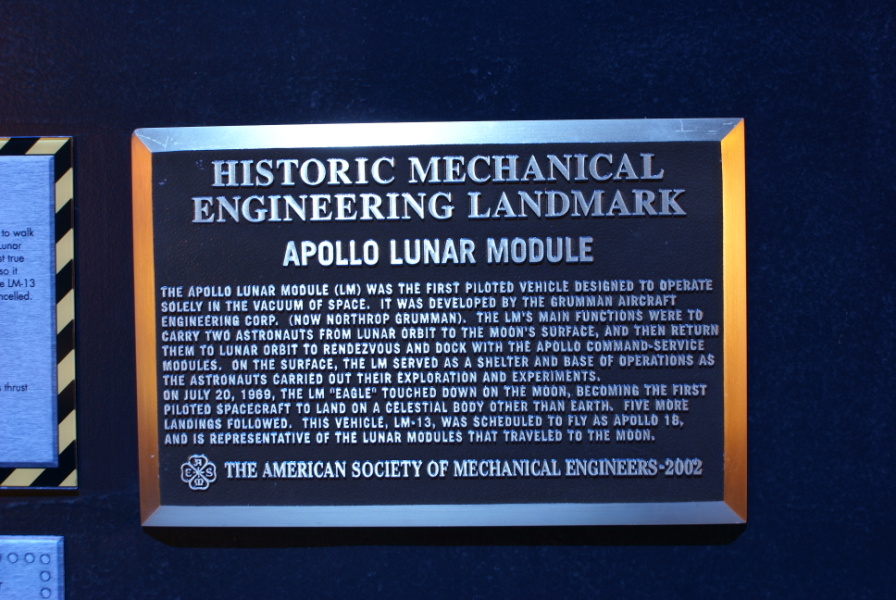| Prev |
heroicrelics.org Cradle of Aviation Site Index LM-13 Gallery |
Next |
dsc34902.jpg
One of the signs accompanying the lunar module. It reads
Historic Mechanical Engineering Landmark
Apollo Lunar Module
The Apollo Lunar Module (LM) was the first piloted vehicle designed to operate solely in the vacuum of space. It was developed by the Grumman Aircraft Engineering Corp. (now Northrop Grumman). The LM's main functions were to carry two astronauts from lunar orbit to the Moon's surface, and then return them to lunar orbit to rendezvous and dock with the Apollo Command-Service Modules. On the surface, the LM served as a shelter and base of operations as the astronauts carried out their exploration and experiments.
On July 20, 1969, the LM "Eagle" touched down on the moon, becoming the first piloted spacecraft to land on a celestial body other than Earth. Five more landings followed. This vehicle, LM-13, was scheduled to fly as Apollo 18, and is representative of the lunar modules that traveled to the Moon.
The American Society of Mechanical Engineers - 2002
This sign states that LM-13 was to fly on Apollo 18, while the other signs cite Apollo 19. Since LM-12 flew on Apollo 17, it would seem more likely that LM-13 was destined to fly Apollo 18, rather than Apollo 19.

| Time picture taken | Tue Jun 26 11:33:56 2007 |
| Location picture taken |
Long Island to the Moon Gallery Cradle of Aviation Museum Garden City, NY |
| Prev |
heroicrelics.org Cradle of Aviation Site Index LM-13 Gallery |
Next |